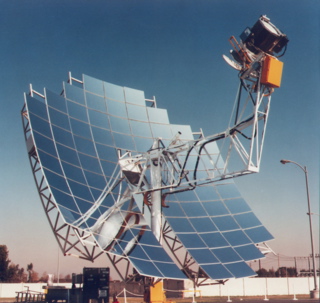Practical Uses of Stirling Engines
 Stirling Engines
are most commonly found in waste heat recovery systems. Power
plants that generate hot water could be used to power several
heat engines for no additional cost after setup. However, the
power generated by these engines would be only a fraction of what
the steam turbine is putting out. Set up costs are high enough
that waste heat recovery systems are not too common.
Stirling Engines
are most commonly found in waste heat recovery systems. Power
plants that generate hot water could be used to power several
heat engines for no additional cost after setup. However, the
power generated by these engines would be only a fraction of what
the steam turbine is putting out. Set up costs are high enough
that waste heat recovery systems are not too common.
Interests in heat engines may increase because they minimize
the cost per unit energy being produced. For large scale power
production, Stirling Engines are too expense to make. Given current
energy shortages and rising environmental concerns, heat engines
may become more attractive.
The most common application of Stirling Engines is water pumping.
Even Robert Stirling modified his engine to pump water from a
stone quarry. Electical power generation is also possible from
solar energy, agricultral waste (rice hulls for example) and refuse.
 Stirling Engines
are most commonly found in waste heat recovery systems. Power
plants that generate hot water could be used to power several
heat engines for no additional cost after setup. However, the
power generated by these engines would be only a fraction of what
the steam turbine is putting out. Set up costs are high enough
that waste heat recovery systems are not too common.
Stirling Engines
are most commonly found in waste heat recovery systems. Power
plants that generate hot water could be used to power several
heat engines for no additional cost after setup. However, the
power generated by these engines would be only a fraction of what
the steam turbine is putting out. Set up costs are high enough
that waste heat recovery systems are not too common.